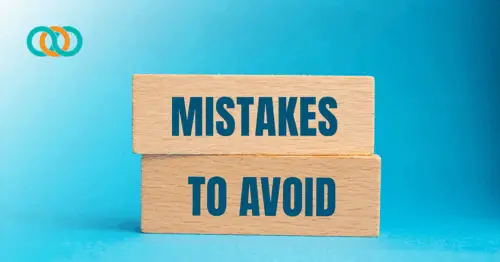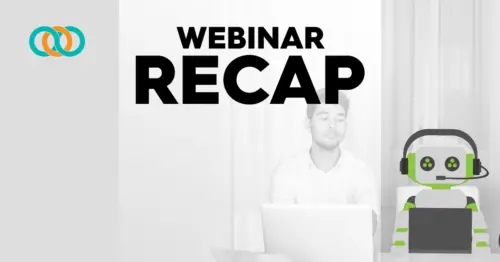- 5:39 to watch
- Introduction
- Transcript
Taking care of your mental health starts by being mindful of when stress or other factors are beginning to overwhelm you. Physiological "alarms" like a racing heart rate or a temporary spike in blood pressure are your body's way of letting you know you need to take a pause and reset.
In the wake of the pandemic, Southwest Airlines worked to recover from the global shutdown and faced a lot of competing priorities. What became evident was that mindfulness initiatives were an effective way for workers to increase their ability to focus, improve working memory and navigate stress.
So in 2020, Christy Lermer, a Senior Instructor on the Leadership and Employee Training Team started small and launched a mindfulness program as a way to improve focus and productivity. Her efforts paid off with consistent participation from all levels of the business, including buy-in and support from the company's leadership.
In this video, Christy uses her first-hand experience to explain how the power of mindfulness and mindful meditation can help you keep calm and carry on.
Would you like our help finding a skilled consultant without a stack of resumes to sift through? Talk with TrainingPros’ industry experienced Relationship Managers and let us find the right L&D consultant to augment your team.
Video Speaker: Christy Lermer
One of the reasons why the body is one of the anchors for us is when we notice right as we can grow our attention to the fact that hey, my heart is racing right now, or my pulse is quickened or I'm getting that feeling in my stomach.
I might need to stop and just take a few deep breaths here right I might hear I'm headed towards that zone. What can I do to pause to keep from going there? How can I get to this place of rest and digest?
Be Mindful: Just Breathe
Breathing and paying attention to the breath is one of the easiest and quickest things we can do to reset and pull us out of that fight, flight, or freeze mode.
The Vagus Nerve activates what's called our Parasympathetic Nervous System.
And that's what we refer to as our rest and digest. It's a place that we can also call our response mode versus our react mode.
It is where we can slow down, where we give our body rest. Right? So those physiological things that are happening like the racing heart, the increased pulse rate, and even those temporary jumps in our blood pressure can happen.
We can take those back down and it gives us an opportunity to digest what's going on around us and make choices. It puts us in a place of response.
Viktor Frankl and his work talk about the place between stimulus and response being that place of choice where we're choosing our actions, we have the power to choose and mindfulness helps take us back to that place, right where we are choosing.
For example, with breathing, you can focus on taking longer exhales to your inhales and when we exhale longer than our inhales, it starts to bring calm to the body, which then gives us an opportunity to make those connections.
This is Your Brain on Mindfulness
Here's what it looks like in your brain as this is happening. So there's a kind of a simple model that dan Siegel had come up with a kind of a hand model of the brain and I love using it as a really good reminder of how I can get to that place of rest and digest.
So, I'm going to bring my right hand up, and hopefully, you can kind of see it here with my background, it's a little bit fuzzy maybe. and you can certainly do it if you want with me or not, but just an easy reminder.
If you think of the brain this is a very simplistic way. But if you think of the bottom of your palm here as the brain stem, right? So right back here connected to the spinal cord.
A lot of very introductory communication that happens in our body happens here in the brain stem. If you look at your thumb and if you fold your thumb in and if you think of the thumb as what we call the limbic system area of the brain.
So, in it from an evolutionary standpoint, the limbic system is the oldest part of our brain. The amygdala is housed in the limbic system, and we often hear the amygdala connected to things like emotion, right?
This is where our initial reactions and emotions come from and are connected here to the amygdala. Now if you fold the rest of your hand over and if you think of this area here as this is, a lot of what we call the gray matter, right?
This is that covering of the brain and right here across your knuckles is the prefrontal cortex. Now the thing is with your hand closed, you feel a connection right between these top fingers and your thumb.
And so, there's a connection in your brain between the amygdala, the limbic system, and the prefrontal cortex. The prefrontal cortex is where executive functions happen.
So, this is where our processing happens, it's where planning happens, it's where we're able to make higher-level executive kinds of decisions connected to our emotions.
And so, these two systems talk to get to each other in our brains. Now one of the things, one of the reasons why Dan Siegel also did this model is because it's an easy way to show what happens when we lose control of those or what he calls, flip our lid right?
So, when we have those moments where we get caught in fight, flight, or freeze, if you've ever said something in the heat of the moment, you wish, you wouldn't have said if you accidentally sent that email you wished you wouldn't have sent or done something that you later regretted.
You probably had one of those moments where you lost the connection here and a great way we can even share this with kids is by saying just simply starting to pay attention to the breath and to make those connections, it can help bring the connections back so that the prefrontal cortex and the limbic system are connected again.
Okay, so there's a lot that's happening in our body that's also connected to our mind and our brain when we are doing things like paying attention to the breath and when we are bringing mindfulness and mindful meditation into our world.
- 5shares
- LinkedIn1
- Twitter1
- Facebook0
- Love This3









